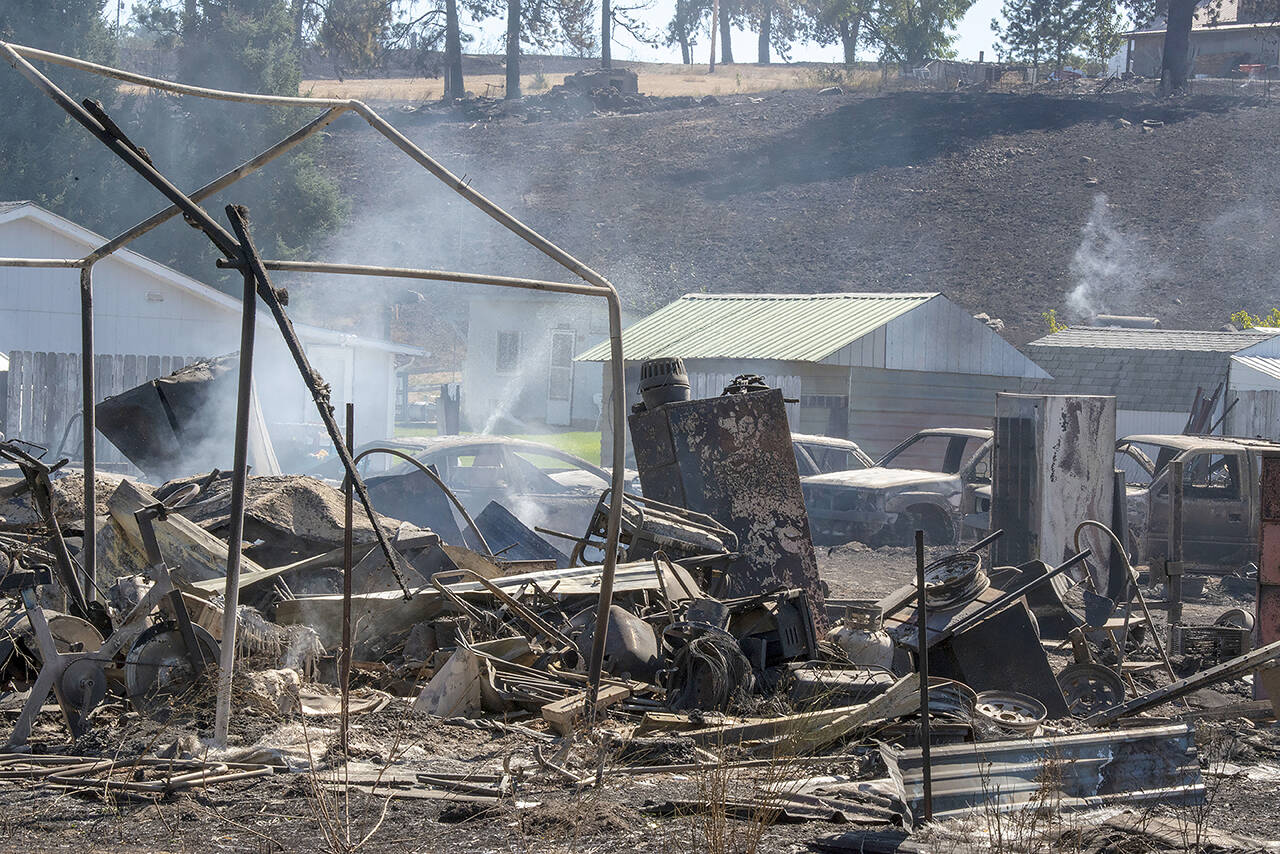By The Herald Editorial Board
The especially drippy April that Western Washington experienced — the third coldest and 10th wettest in 128 years, according to the U.S. Drought Monitor — helped build snowpack and relieve last year’s drought conditions, yet Eastern Washington and much of the rest of the Pacific Northwest remains parched.
Nearly 70 percent of the Pacific Northwest, including Eastern Washington, central and southern Oregon and southern Idaho, remains in some stage of drought, with 20 percent ranked as experiencing either “extreme” or “exceptional” drought as the region prepares for another wildfire season.
And while forecasters say Western Washington isn’t likely to see a repeat of the record-high heatwave that brought days of 100-degree-plus temperatures to Snohomish County and the rest of the Puget Sound region in late June and earlier July last summer, the region still is expected to see increased chances for above-normal temperatures and below-normal precipitation, according to the latest forecast from the state climatologist’s office, meaning the risks for wildfire can’t be ignored here either.
That’s reason enough for added caution from spring and into fall, of course, but it also should come with the realization that our climate — even on “the wet side” — is becoming drier and warmer during much of the year and the wildfire season itself is expanding its length and wildfires themselves are expanding their territory.
Through the first decade of the century, Washington state could anticipate an average loss of about 189,000 acres to wildfires each year; in more recent years that average has increased to nearly a half-million acres. Last year, a total of 674,279 acres burned on state, federal and private lands, according to a regional wildfire interagency report, the third-worst year following the 842,000 acres lost to wildfires in the state in 2020 and the 1.1 million acres lost in 2015.
The state Legislature and the state Department of Natural Resources, under the direction of Public Lands Commissioner Hilary Franz, have made investments and policy changes to address the growing threat of wildfires in the state, including $125 million in last year’s state budget and a commitment for a total of $328 million by 2027 to bolster firefighting crews and equipment, reduce hazards with prescribed burns and thinning, work to restore forest health, encouragement of fire prevention efforts for private homeowners and landowners and other initiatives.
Yet, Washington state may be lagging behind Oregon and California in efforts to reduce the threat of wildfires that are literally sparked by powerlines and other electrical infrastructure during heavy winds, of which the most infamous example was 2018’s Camp Fire, which destroyed much of the town of Paradise, Calif., and caused the deaths of at least 85 people. The utility responsible, Pacific Gas & Electric, found negligent in maintaining its powerlines, has filed for bankruptcy.
Here in Washington state, a wildfire that destroyed 85 percent of homes and other structures in the Eastern Washington towns of Malden and Pine City on Labor Day 2020 was sparked by a tree that fell onto powerlines.
Washington state law, as The Seattle Times outlined in January, says little about utilities’ responsibility to limit wildfire risk from electrical lines and infrastructure. The state’s Utilities and Trade Commission, which has authority over the state’s three private utilities — including Puget Sound Energy in Western Washington — does not require or regulate utilities’ inspection and upkeep of power lines, concerning itself mostly with rates; and public utilities, such as the Snohomish PUD, overseen by an elected board of commissioners, are left to regulate those issues themselves.
Recently, there has been some movement to increase that oversight, although it’s moved slowly.
Last year, the state utilities commission requested the three investor-owned utilities submit plans for wildfire prevention and response, including reports on management of trees and other vegetation and whether each utility had plans to shut off power when high winds and dry conditions warranted that action.
The state Legislature, in 2019, established a special task force on utility wildfire issues, which has since become a permanent advisory committee, but after submitting a final report to lawmakers in 2020, its recommendations — including improved communication between the state and utilities — have yet to be implemented.
Notably, some utilities have addressed the risks without state oversight. Puget Sound Energy and other major utilities have announced plans to spend tens of millions of dollars in upkeep and infrastructure improvements, including removal of trees near powerlines and systems that cut power automatically if a fault is detected, the public radio Northwest News Network reported last month.
Closer to home, the Snohomish PUD has stepped up its work to limit wind damage to powerlines and poles. An average of 550 miles of the PUD’s 3,700 miles of powerlines are inspected by arborists and maintained by crews each year in Snohomish County and on Camano Island. As well, the PUD works with individual homeowners on tree maintenance and in advising consumers about suitable trees placed near lines.
For the PUD and other utilities throughout Western Washington those efforts have been prompted more in the interests of avoiding outages for customers than in reducing the risk of wildfires. But as Western Washington experiences longer seasons of warmer and drier weather, the potential for wildfires can easily increase. From April through September of last year, Snohomish County experienced “abnormally dry” conditions, according to an interactive map at NOAA’s Drought.gov website.
This summer may not bring a repeat of last summer’s sweltering heat wave, but that doesn’t mean we shouldn’t be sweating wildfire season.
Talk to us
> Give us your news tips.
> Send us a letter to the editor.
> More Herald contact information.

























